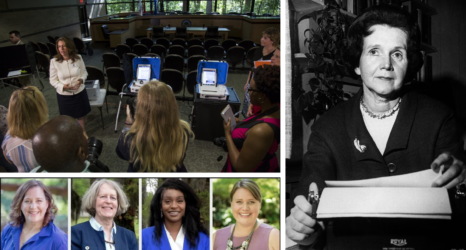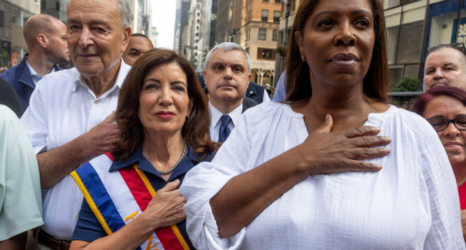Across the U.S., women mayors rely on networking, collaboration and sisterhood to solve problems plaguing modern cities—from reproductive rights, to gun violence, to climate change.
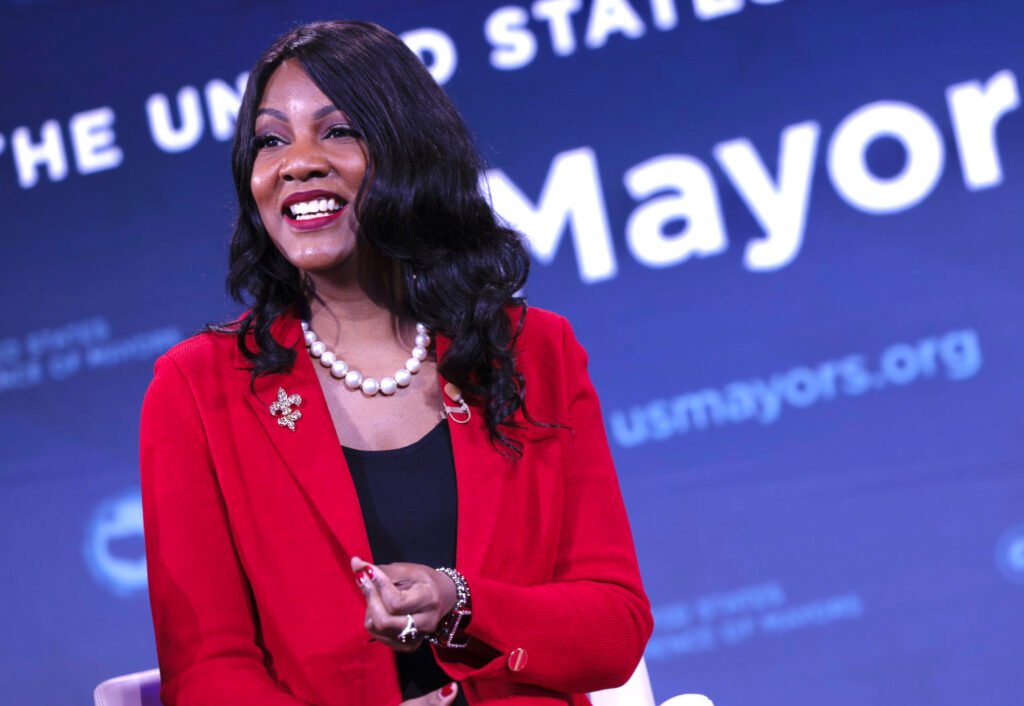
More and more, women serving as mayors are part of the feminist frontline for advancing equal rights and are leaders on issues of concern to women voters.
As St. Louis Mayor Tishaura Jones said, “Men run for office to be somebody; women run to do something.”
Many mayors like Jones are focusing on issues with large gender gaps, for which women report a higher level of concern and different voting preferences than men. Poll after poll shows significant gender gaps on issues related to equality, reproductive rights, gun violence, climate change, domestic and sexual violence and more.
“When I ran for office, from the state legislature all the way to mayor, I ran to do something to change the condition of the people that I represent,” Jones added.
Jones shared data to back up her work to make change happen: Between 2022 and 2023, St. Louis experienced a 21 percent decrease in homicides, a 22 percent decrease in violence overall and a 50 percent decrease in youth violence.
Men run for office to be somebody; women run to do something.
St. Louis Mayor Tishaura Jones
“Unfortunately, we don’t have state legislatures or Congress that are going to act to make our country safer. We have to be creative on the local level to protect people from guns and violence. In St. Louis, we have three approaches: prevention, intervention and enforcement. We focus heavily on the prevention and intervention part,” Jones said.
She is leading several initiatives, including setting up an Office of Violence Prevention that works with local organizations to support conflict resolution. She also recently launched the Show Me Peace initiative, which focuses on violent neighborhoods.
I had the opportunity to speak to several women mayors at the United States Conference of Mayors last month in D.C. Each mayor I interviewed had a slightly different story about deciding to run for office and becoming, for many, the first woman to be elected mayor in her city.
“I never wanted to be a politician,” Jones said. “My dad was a politician. He was the comptroller for the city of St. Louis when I was growing up, along with being an alderman and a committeeman. His career started when I was about 3 years old, and I watched him as a little girl. I just never thought that this was my path.”
But things changed—she became an adult and was encouraged by her mother.
“Maybe there are some things that are inherent within your DNA. I also feel like this is my calling. I love this work,” Jones said.
“First, I became a committeewoman working at the party level, then ran for state representative and I became a single mom. … I was tapped to consider running for St. Louis city treasurer, which is a citywide position. Then I became the first woman mayor in 2021. I ran in 2017 and lost by 888 votes, but I was determined and ran again and won.”
Jones reminded her audience that there are more African American women mayors in office now than at any other time in history. “Karen Bass in Los Angeles; Muriel Bowser in Washington, D.C.; and Latoya Cantrell in New Orleans all are running big cities. It’s changing the tide for what people see, as women of color are leading large cities and small. … A lot of times, women feel like they can’t run because they don’t have everything. Women like to be prepared, ultra-prepared, to meet the moment.
“For women who are considering a run for office, all you have to do is care about your community. And if you care enough to want to change things, consider running for office.”
We have to be creative on the local level to protect people from guns and violence.
Mayor Tishaura Jones
Mayor Regina Romero in Tucson, Arizona, started as a community activist empowering people to take action. She broke many barriers as the first member of her family to vote and the first to graduate from college. She is the youngest of six children whose parents worked as immigrant farmworkers.

Romero became the first woman to serve as mayor of the state’s second-largest city and the first Mexican American to hold the office since the 1870s, when Arizona was still a territory.
“I was elected just a few months before COVID was declared a pandemic and had to make quick decisions based on information from public health experts,” Romero told Ms.
As the crisis unfolded, women mayors joined together from the three largest cities in Arizona: Phoenix, Tucson and Flagstaff. They found power in numbers up against then-Republican Governor Doug Ducey who was criticized for re-opening the state too soon, blocking local lawmakers on mask mandates and confusing the public on vaccinations.
“Together, we had to push the governor on mask mandates, vaccines and lockdowns using evidence-based information on how best to protect people,” she said.
Her actions resulted in her personal information being posted publicly, leading to pickets at her home, and a failed recall attempt partially because of her position on supporting vaccines and masks.
Two years later, Romero launched her reelection campaign on International Women’s Day, planning to reduce homelessness, support small businesses, promote gender equality and racial equity, help children and families and provide needed leadership during the pandemic. In 2023, she won with 61 percent of the vote.
The most serious challenge for Tucson is the climate crisis.
“Tucson has the fastest-rising temperature in the nation and one of the deadliest climates, with a 22-year drought,” Romero said.
Romero calls herself an “innate environmentalist” who grew up in Somerton, Arizona. She grew up saving electricity, water and recycling constantly.
Under her leadership as mayor, the city adopted a Climate Action and Adaptation Plan to ensure a more sustainable, equitable and thriving Tucson for generations to come.
The climate plan was created with more than 5,000 Tucsonans over 14 months through public meetings, listening sessions and surveys. Today, it is known as Tucson Resilient Together and includes more than 122 climate actions across five areas: governance and leadership, energy, transportation and land use, community resilience and resource recovery and management. The results are impressive, with regular updates on progress and challenges.
A new Office of Equity works closely with community and city leadership to create an equity framework to be adopted by all departments and offices throughout Tucson.
In 2022, when word first came down about a likely Supreme Court decision reversing Roe v. Wade, Romero made abortion rights and access to reproductive rights a top issue, drawing on her many years as a political organizer.
When the media started reporting on a leaked Supreme Court decision on abortion, she went into overdrive. She led the passage of a “no arrest” resolution in the city council that said “no physical arrest will be made by an officer for an alleged violation” of state laws limiting abortion rights. Under the resolution, doctors could not be arrested for performing an abortion nor could people be arrested who assisted or had an abortion.
On the last anniversary of Roe‘s overturning, Romero used her bully pulpit in a public event with local abortion-rights groups urging voters to join a 2024 campaign to amend the Arizona Constitution to protect abortion access and alerting people about the case pending before the Supreme Court on mifepristone.
Bodily autonomy, reproductive freedom and privacy rights cannot be something people have in one state and not another.
Tucson Mayor Regina Romero
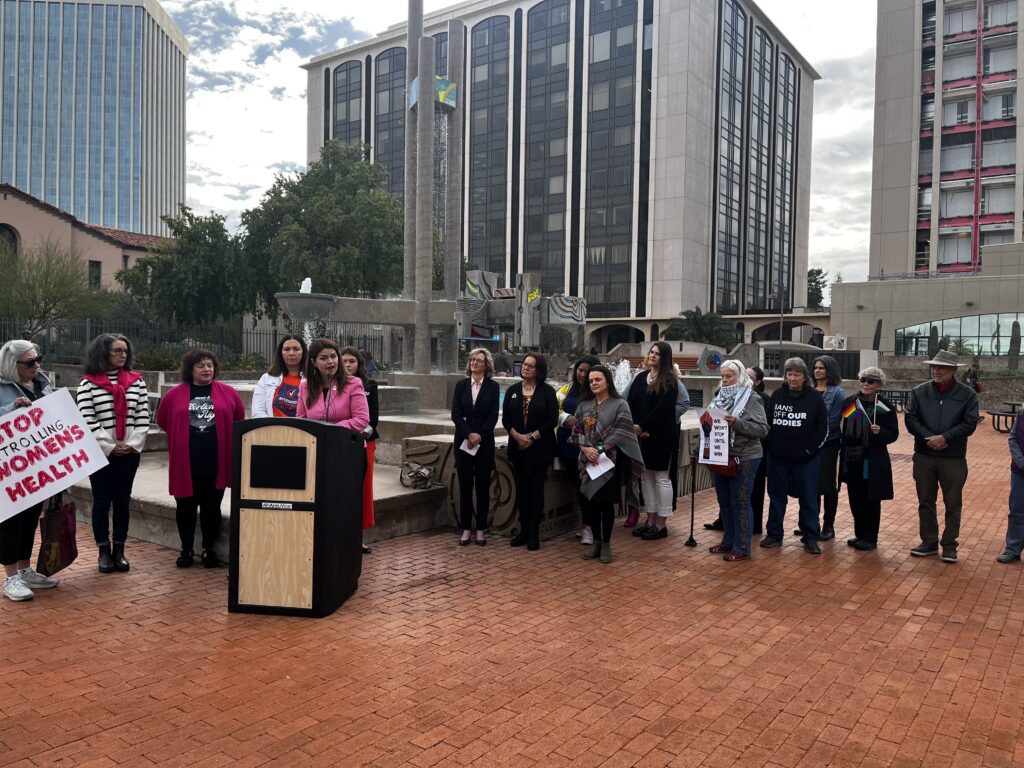
Arizona has a 1901 law still on the books that bans all abortions, and former Republican Governor Ducey signed a law in 2022 banning abortions after 15 weeks.
“Bodily autonomy, reproductive freedom and privacy rights cannot be something people have in one state and not another,” Romero declared.
Women Mayors Form Networks, Share Ideas and Support Each Other
During panel discussions, presentations and interviews at the United States Conference of Mayors meeting held in Washington, D.C., in mid-January, Romero, Jones and other women mayors emphasized the importance of issues relating to women, communities of color and young people.
The seeds of this support for these issues were planted, in part, by Democrat Dianne Feinstein, the mayor of San Francisco at the time. She understood the potential power of mayors and, in 1983, called together a handful of mayors, most of whom had been the first women elected as mayor in their cities. She purposefully worked to make sure the group was bipartisan. Feinstein—along with Republican Margaret Hance, the mayor of Phoenix—convened what was then called the Women Mayors’ Caucus of the United States Conference of Mayors.
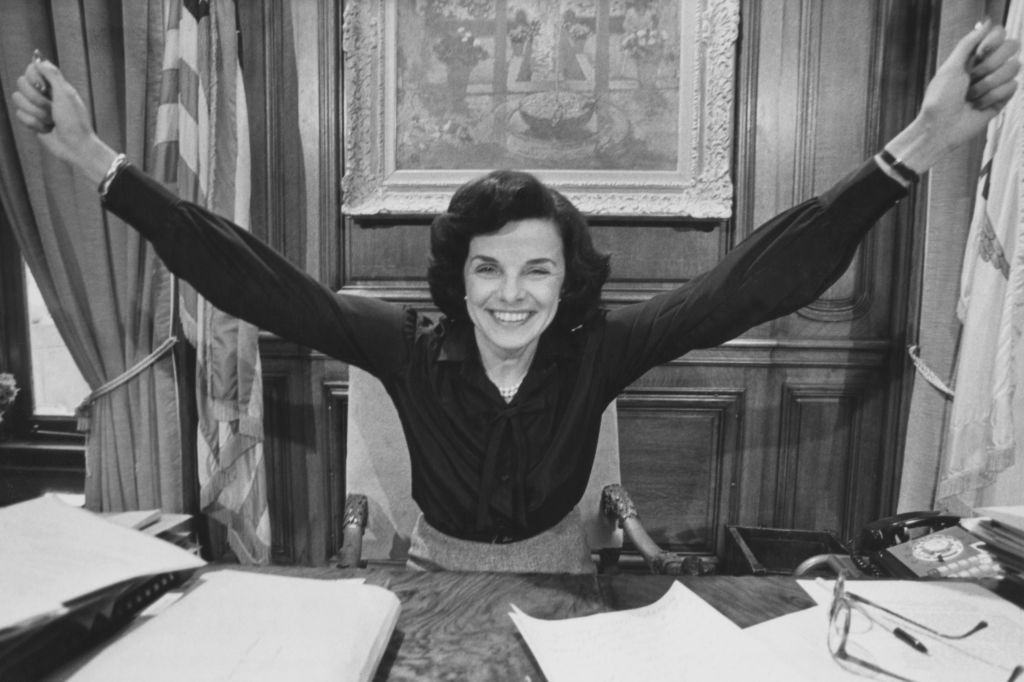
The conference was founded in 1933 during the Great Depression when cities were close to bankruptcy, with economic shockwaves of unemployment, food shortages and homelessness. At the time, only a few women were mayors of very small towns. Only one, Mary Sullivan, mayor of Beaver Dam, Wis., elected in 1934, may have qualified for membership by representing a city of over 10,000 people.
Throughout the 1930s, mayors came together to call on the federal government for continued help, a practice that continued throughout the decades.
In 1981, Mayor Helen Boosalis of Lincoln, Neb., served as the first woman president of the conference. Today, Reno Mayor Hillary Schieve serves as president, and half of the Board of Trustees are women who are elected mayors. Conference membership is limited to those cities with a population of 30,000 or more.
Today, the women’s caucus is now the Women Mayors Leadership Alliance—an influential, bipartisan membership group working to increase its influence within the conference; networking on the challenges they face as mayors; and exchanging ideas on issues important to women, including the Equal Rights Amendment, economic equity, women’s health and reproductive rights.
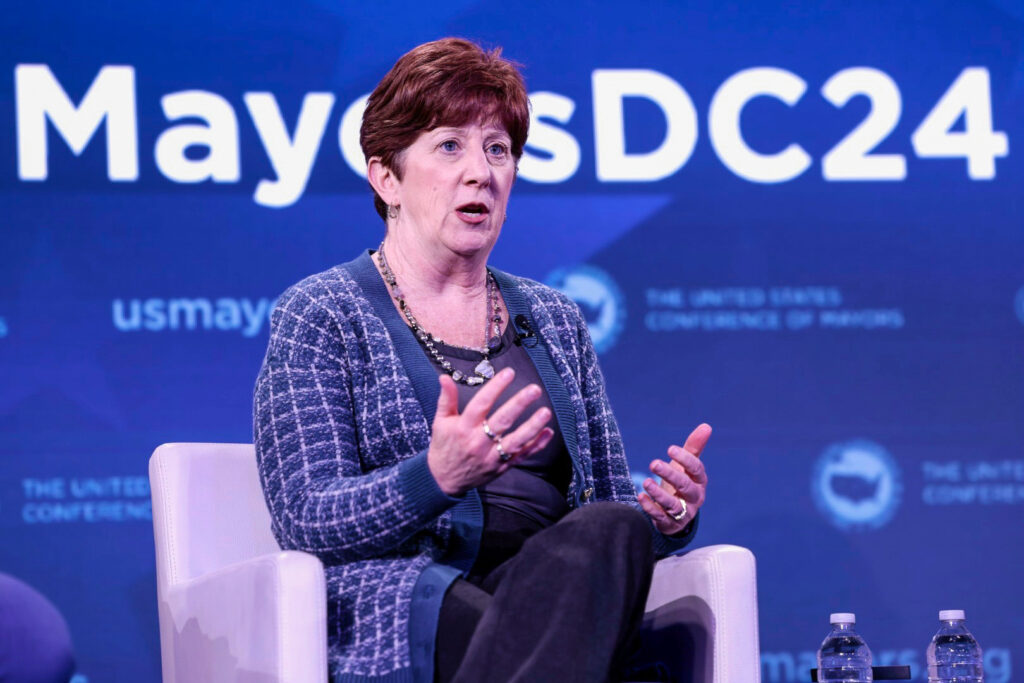
Albany (N.Y.) Mayor Kathy Sheehan is chair of the Women Mayors Leadership Alliance and has helped guide other women mayors through many challenging issues. Elected in 2014, Sheehan was the first woman to serve as mayor of Albany, the state’s capital and its sixth largest city.
“The Leadership Alliance has evolved, and I am following in the footsteps of other great chairs,” Sheehan said.
“I went to my first session in 2015 when we shared tips with other women mayors, but it was insular. It was an alliance of women for women. There are those of us who said we bring something to the full table. The men need to be listening to us. This isn’t just about women’s issues. These are issues that impact our communities and impact all mayors and every municipality across the country.
“We have evolved from just having a breakout session that was only attended by the women mayors, to plenary sessions, and now a conference president who has integrated many women mayors and our issues into the full program.”
Sheehan moderated a panel titled “Advancing Women Officers in Local Law Enforcement” at the recent U.S. Conference of Mayors meeting. With a focus on the 30×30 Initiative at New York University and a goal of 30 percent representation in policing by 2030, participants shared their ideas to increase the number of women in the sector along with recruiting practices and community partnerships.
Women are severely underrepresented in the policing and public safety sector with only 12 percent of sworn officers and 3 percent of police leadership in the United States being female.
The men need to be listening to us. This isn’t just about women’s issues. These are issues that impact our communities and impact all mayors and every municipality across the country
Albany Mayor Kathy Sheehan
Sheehan is also working to bring a new generation of leaders to city government.
“I’m in my 11th year, the second year of my third and final term,” Sheehan said. “We’ve only had four mayors in the last 80 years because we had a mayor that was in office for 42 years, and then 12, and then 20. For any healthy community to thrive and grow, we’ve got to make sure that we’re bringing up that next generation of leaders. Now more than ever, we need new leadership.”
The Path for Women Serving as Mayors and Governors Has Not Been an Easy One
As of September 2023, of the 1,616 mayors and officials who perform mayoral functions in U.S. cities, towns and minor civil divisions with populations over 30,000: 417—or 25.8 percent—were women, according to research from Rutgers University’s Center for American Women in Politics.
Of the top 10 most populated cities in the U.S., women are mayors of four:
- Karen Bass in Los Angeles
- Kate Gallego in Phoenix
- Cherelle Parker in Philadelphia
- Donna Deegan in Jacksonville
All of them are Democrats.
An alarming 2019 research memo by the Barbara Lee Family Foundation (BLFF), titled “Ready, Willing and Electable: Women Running for Executive Office,” reported that “when running for executive office, women face obstacles that men running simply do not.”
Since 1998, BLFF has been conducting groundbreaking research on women running for office, focusing on every gubernatorial race with a woman on the ballot. An important, consistent finding is that voters have been more comfortable seeing women serve as members of a legislature than they have been electing them to executive offices—positions in which they will have sole decision-making authority.
“When Barbara Lee started this foundation 25 years ago, she realized the importance of building a pipeline of women serving in executive office,” said Amanda Hunter, BLFF executive director. “Especially in recent years, the leadership of mayors in this country has been more important than ever.”
Voters have been more comfortable seeing women serve as members of a legislature than they have been electing them to executive offices—positions in which they will have sole decision-making authority.
In January 2020, the Women Mayors Network was launched as a part of the Mayors Innovation Project at the University of Wisconsin in Madison. The network is an impressive sisterhood that provides a safe space for women mayors where they can speak candidly, learn from each other and gain the skills necessary to succeed—especially for women in leadership roles.
As managing director Katya Spear told Ms., “We are part of a national learning network for mayors committed to shared prosperity, environmental sustainability and efficient democratic government. For women mayors, the focus is on intersectional policy issues related to race, gender, reproductive justice and more recently on the rise of political violence.”
Just months after the network was formed, COVID-19 greatly affected the lives of mayors everywhere. Newly elected women faced sexist and racist attitudes under an unprecedented public health epidemic.
“Organizers of the first convening felt strongly that mayors are the closest to constituents but farthest from peers,” Spear said. “We were able to then have virtual meetings at a time when the challenges were daunting and women mayors could help each other.”
The Women Mayors Network often collaborates with Mayors for a Guaranteed Income and Climate Mayors, since so many women mayors face issues of inequality, public safety and a climate crisis.
For women mayors, the focus is on intersectional policy issues related to race, gender, reproductive justice and more recently on the rise of political violence.
Katya Spear
In November 2023, BLFF announced that it would sunset at the end of 2024. The Women Mayors Network was one of 12 outstanding organizations supporting women’s political leadership across the country chosen to receive funds. Over the next year, the network will be doing in-depth interviews to document racial and gender biases faced by women mayors to help provide a roadmap for change.
As their website writes: “Local leaders are facing unprecedented challenges and women mayors are meeting these head on.”
With more and more women like Kathy Sheehan, Tishaura Jones and Regina Romero serving as mayors, networking, collaboration, and a sisterhood becomes vital for solving the many problems in cities today.
Up next:
U.S. democracy is at a dangerous inflection point—from the demise of abortion rights, to a lack of pay equity and parental leave, to skyrocketing maternal mortality, and attacks on trans health. Left unchecked, these crises will lead to wider gaps in political participation and representation. For 50 years, Ms. has been forging feminist journalism—reporting, rebelling and truth-telling from the front-lines, championing the Equal Rights Amendment, and centering the stories of those most impacted. With all that’s at stake for equality, we are redoubling our commitment for the next 50 years. In turn, we need your help, Support Ms. today with a donation—any amount that is meaningful to you. For as little as $5 each month, you’ll receive the print magazine along with our e-newsletters, action alerts, and invitations to Ms. Studios events and podcasts. We are grateful for your loyalty and ferocity.




